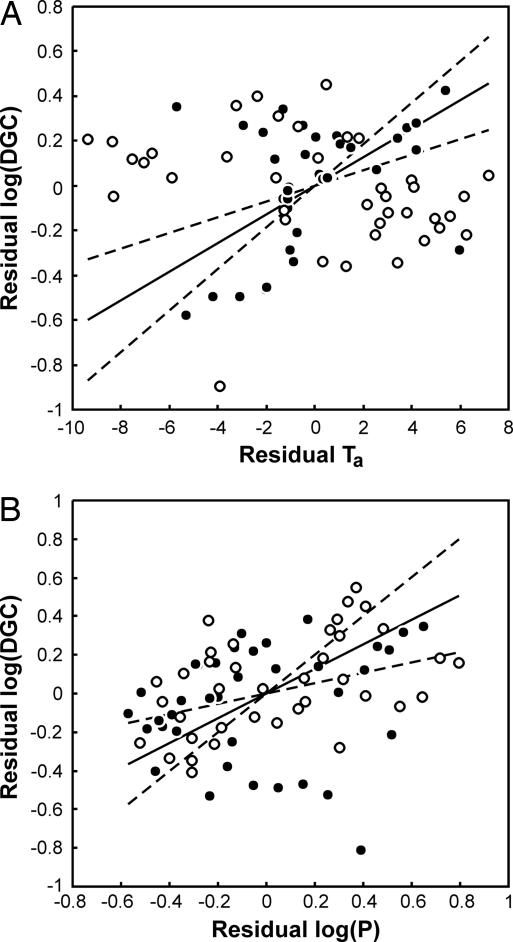Fig. 1.
The effect of environmental variables on discontinuous gas exchange in insects. Relationship between DGC duration and (A) habitat ambient temperature (Ta) and (B) habitat precipitation (P). To remove the potential confounding effects of body mass, measurement temperature, rate of CO2 production, and collinearity between environmental variables, residuals are presented. Residuals are calculated as the difference between measured values and those predicted by the best-fit model from Table 2 (the Ta∗P interaction was excluded from residual calculations). In both A and B, the solid line is the phylogenetically correct correlation between log(DGC) and the environmental variable plotted through the bivariate mean and shown as ±1 SE of the appropriate coefficient from Table 3 (dashed lines). To indicate the effect of the interaction term (Table 3), filled symbols in A are log(DGC) values for species in which log(P) is lower than the median log(P) in the data set; unfilled symbols are log(DGC) values for species in which log(P) is higher than the median log(P) in the data set. The relationship between log(DGC) and Ta is apparently stronger when log(P) is low, which supports the hygric hypothesis. Similarly, in B, filled symbols are log(DGC) values for species in which Ta is lower than the median Ta in the data set; unfilled symbols are log(DGC) values for species in which Ta is higher than the median Ta in the data set.

